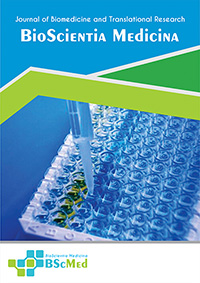Main Article Content
Abstract
Background: Painful diabetic neuropathy (PDN) is a severe complication of type 2 diabetes mellitus (T2DM). Nerve Growth Factor (NGF) is vital for neuronal health, but its status as a systemic biomarker in PDN is contested due to conflicting reports on serum levels. This study aimed to quantitatively synthesize the literature on the association between serum NGF concentrations and the presence of PDN in patients with T2DM.
Methods: PubMed, Scopus, Web of Science, and Embase were searched for observational studies from January 2015 to August 2025 that measured serum NGF in T2DM patients with PDN versus control groups (T2DM without PDN or healthy individuals). Data were independently extracted by two reviewers. A random-effects model was used to calculate the pooled Standardized Mean Difference (SMD) and 95% confidence intervals (CIs) to account for assay variability. Heterogeneity was explored using the I² statistic and meta-regression.
Results: From 1,482 records, seven cross-sectional studies (485 PDN patients, 511 controls) were included. The meta-analysis revealed that patients with PDN had significantly lower serum NGF concentrations compared to controls, with a pooled SMD of -1.28 (95% CI: -1.79 to -0.77, p < 0.00001). Substantial heterogeneity was present (I² = 84%). Meta-regression showed that a longer duration of diabetes was significantly associated with a greater reduction in NGF levels (p = 0.02). No significant publication bias was detected.
Conclusion: This meta-analysis provides consolidated evidence that lower systemic NGF levels are a strong feature of established PDN. The findings support the neurotrophic deficit hypothesis in PDN pathophysiology and identify NGF as a candidate biomarker requiring rigorous validation in longitudinal studies that carefully differentiate painful from painless neuropathy phenotypes.
Keywords
Article Details
As our aim is to disseminate original research article, hence the publishing right is a necessary one. The publishing right is needed in order to reach the agreement between the author and publisher. As the journal is fully open access, the authors will sign an exclusive license agreement.
The authors have the right to:
- Share their article in the same ways permitted to third parties under the relevant user license.
- Retain copyright, patent, trademark and other intellectual property rights including research data.
- Proper attribution and credit for the published work.
For the open access article, the publisher is granted to the following right.
- The non-exclusive right to publish the article and grant right to others.
- For the published article, the publisher applied for the Creative Commons Attribution-NonCommercial-ShareAlike 4.0 International License.





